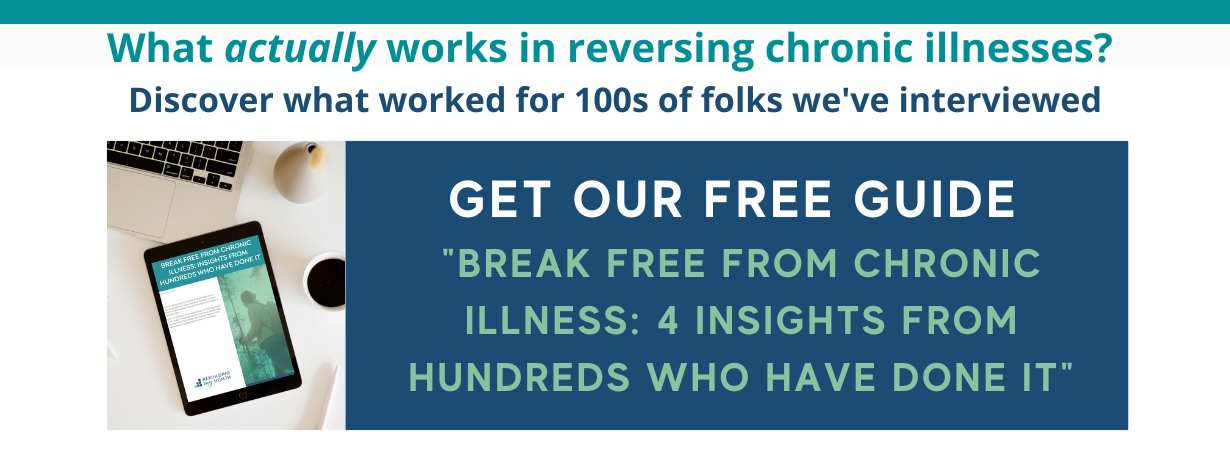Smiling Again: An Arizona Woman Turns Around Myasthenia Gravis
“When I saw something about the Wahls Protocol, it was like a light bulb went on. If I could do something to make a difference in the quality of my life, I had to try it. And I started that day.”
– Candy Werley
Doctors said, this would be Candy’s new life.
A life without the ability to chew, walk, drive or see clearly.
One where she couldn’t work as a teacher or actively play with her grandkids.
She’d even lost her ability to smile.
Yet, she questioned whether this was really it, the life in store for her.
“I wanted to do something for myself, to find a way to heal my body,” she says.
A Diagnosis: Myasthenia Gravis
At the age of 56, Candy Werley’s mobility began deteriorating body part by body part. At the time, she was a middle school math teacher and leader in her school.
One day, she noticed a fight brewing between two students in a courtyard. Immediately, she readied herself to break it up.
“I kicked off my shoes, dropped my water bottle and was off to the rescue – and my foot wasn’t working right. I felt like I was going in slow motion,” she recalls. After that, Candy immediately went on long-term sick leave.
Concerned, she saw a neurologist. Based on her symptoms, which included a weak foot and occasional vision problems, they suspected multiple sclerosis. However, an MRI showed no signs of the nerve demyelination characteristic of MS.
When Candy sought a second opinion, another neurologist quickly suspected something else: myasthenia gravis, an autoimmune neuromuscular disease that causes muscle weakness.
“I was just a wreck. I couldn’t function,” she says. “And within 10 minutes of being in his office, he diagnosed me with myasthenia gravis just by his questions and an exam.”
Reluctantly… A Thymectomy for Myasthenia Gravis
That semi-retired neurologist referred her to the Barrow Neurological Institute in Phoenix, where they ran blood tests. Again, tests were inconclusive.
Blood tests for myasthenia gravis look for antibodies, however, they don’t show up for everyone – even those with the condition. Given the negative test, doctors questioned whether she actually had it.
“Some of the doctors even thought I was making it up,” she recalls. “It was a horrible experience. But they couldn’t take away the fact that I had double vision.”
Regardless, Candy considered her treatment options. Surgery to remove the thymus gland is often the recommended protocol. In about a third of cases, surgery sends myasthenia gravis into remission. In another third, it improves the condition. The remainder see no relief from surgery.
Candy, however, hoped to avoid surgery altogether.
Instead, she began taking medications typical for myasthenia gravis: Imuran, an immunosuppressant, and Mestinon, which improves muscle strength.
While those medications may have slowed her body’s deterioration, she was nonetheless on a downward slide.
Reluctantly, she agreed to a thymectomy. Afterward, she did seem to feel better, but still needed medication and was still debilitated.
For additional help, she began intravenous immunoglobulin (IVIg) therapy, which injects antibodies from donors into her body. The idea is to give people the antibodies their own bodies are not making, to help them fight infections.
The therapy stabilized Candy’s condition for a while. But a few years in, she began feeling ill. Studies show that, over time, some may experience side effects from IVIg.
“You can become toxic from it,” she says.
Ever-Evaporating Quality of Life
Doctors offered little hope that Candy would ever regain lost function. By that point, she spent much of her time in a hospital bed at home, with a caregiver. She couldn’t readjust herself in bed without help and the quality of her vision would come and go.
To get around, she used a scooter and an ankle foot orthosis (AFO) for her drop foot.
Along the way, she had shifted to work disability. When she tried to return to work part-time, her health started to decline once more, forcing her to leave teaching again.
But she retained a sliver of hope that something was out there that could change her situation.
When she asked doctors about exercise, they made her feel silly for asking. With a muscle disease, they said that would only fatigue her muscles more. Instead, a personal trainer came to her house to help stretch her legs.
Then, while perusing an online forum for women with myasthenia gravis, another member shared her positive experience with a lifestyle approach to myasthenia gravis.
The woman had found success with the Wahls Protocol, a nutrition and exercise regimen that was created by a physician with multiple sclerosis, Dr. Terry Wahls. In 2014, Dr. Wahls documented the protocol in the book, The Wahls Protocol: A Radical New Way to Treat All Autoimmune Conditions Using Paleo Principles.
The protocol, however, has been shown to work with other autoimmune and inflammatory conditions beyond MS.
What did Candy have to lose? Changing her diet and adding specific exercises seemed relatively low-risk compared to all the other medications and therapies she had cycled through. She also believed in the science behind the protocol, that the body needs specific nutrients to function properly.
“When I saw something about the Wahls Protocol, it was like a light bulb went on,” she says. “If I could do something to make a difference in the quality of my life, I had to try it. And I started that day.”

Learning to Follow the Wahls Protocol
However, the diet wasn’t simple to follow, even for someone who likes to cook, like Candy. That first week, she went to her local natural grocery store every day for the high-quality meats and vegetables to get the nutrients called for on the protocol.
“It was overwhelming at first, but you learn and it becomes easier and easier,” she says.
Was it tempting to cheat? No, says Candy. She was mentally ready to make the changes necessary to heal and made sure she was always prepared with compliant food. And rapid changes kept her motivated.
Quickly, she began losing weight, dropping 10 pounds within the first month and eventually 25 pounds. But most promising, she began feeling better. Her energy rose and she found she could reposition herself in bed for the first time in a while. She no longer needed her AFO for drop foot.
She upped her exercise as well, including cross-training, treadmill, stationary bike, stretching and yoga.
Beyond diet and exercise, she added supplements such as calcium, turmeric, collagen, flaxseed and seaweed. Because she wasn’t a fan of eating organ meats, prescribed by the protocol, she took a desiccated liver supplement instead.
Candy was feeling so good that she decided to experiment with removing medication.
A few weeks after stopping Imuran, her vision blurred again – an inflammatory spike that the Wahls Protocol book suggested could occur.
“You can’t necessarily go off the medication,” she says. “You have to give your body time to heal.”
Eventually, Candy found just the right balance of lifestyle approaches and medication. Combined with the Wahls Protocol, she takes one-quarter the dose of Imuran and continues taking Mestinon. And she still sees a neurologist who is supportive of her lifestyle approach.
As an unexpected benefit, within six months starting the protocol, she was able to cut her blood pressure medication, Losartan, in half.
A Reason – and Ability – to Smile Again
These days, though Candy’s left foot is still weak, she no longer feels limited by myasthenia gravis. She can drive, join in activities with her grandkids, and tutors students in math. Where she once napped a couple of hours a day, she now only needs a short power nap in the afternoon, along with an 8-hour night.
She has every reason to smile – and can do so again.
“The Wahls Protocol has truly given me a normal life,” she says. “You would never know that I have issues.”
Candy’s Tips for Sticking to the Protocol
Bring your own food – Candy takes her own meals to get-togethers with friends. Often, it’s simply cauliflower roasted with garlic. Then, she eats the meat available wherever she is.
Travel prepared – When she travels, she carries protein bars with compliant ingredients, snack-size packs of almond butter and powdered greens.
Stay positive – Through it all, Candy has remained hopeful and positive. “I think that that just makes a big difference in how you handle things,” she says.
What works for one person may not work for another. Consult your health practitioner for professional health advice before trying any new approaches.
If you found this story helpful, you may also like Former ‘Pizza Guy’ Knocks Out 95% of Multiple Sclerosis Symptoms with Lifestyle Overhaul.
The information on this site is for educational and inspirational purposes only and is not intended to replace the advice of qualified professionals. Keep in mind that what works for one person may not work for another. Always consult your healthcare practitioners before beginning new approaches or treatments. Some links on Rebuilding My Health may be affiliate links. This means that we may receive a commission - with no additional cost to you - if you make any purchases using those affiliate links. Rebuilding My Health is a participant in the Amazon Services LLC Associates Program. Learn more.


